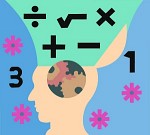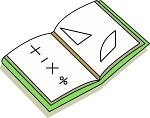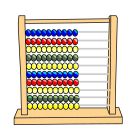- Carl Junction Schools
- I Can Statements
- Math I CAN (Revised 2024-2025)
Academics
Page Navigation
- Announcements
- Alternative Methods of Instruction
- Assessment
- Continuous School Improvement Plan
- Curriculum Development Plan
- Curriculum K-12
- Curriculum Revision Cycle
- English Language Learners
- Gifted Education
- Proficiency Scales
-
I Can Statements
- ELA I CAN (Revised 2023-2024)
- Math I CAN (Revised 2024-2025)
- Science I CAN (Revised 2021-2022)
- Social Studies I CAN (Revised 2023-2024)
- Art I CAN (Revised 2022-2023)
- Business I CAN (Revised 2021-2022)
- Counseling I CAN (Revised 2023-2024)
- FACS I CAN (Revised 2022-2023)
- Gifted I CAN (2023-2024)
- Industrial Tech I CAN (Revised 2022-2023)
- Library Science I CAN (Revised 2020-2021)
- Music I CAN (Revised 2022-2023)
- PE & Health I CAN (Revised 2022-2023)
- World Language I CAN (Revised 2020-2021)
-
Scope & Sequence Charts
- ELA Scope & Sequence (2023-2024)
- Math Scope & Sequence (2019-2020)
- Science Scope & Sequence (2021-2022)
- Social Studies Scope & Sequence (2023-2024)
- Art Scope & Sequence (2017-2018)
- Business Scope & Sequence (2021-2022)
- Counseling Scope & Sequence (2023-2024)
- FACS Scope & Sequence (2016-2017)
- Gifted Scope & Sequence (2023-2024)
- Industrial Tech Scope & Sequence (2017-2018)
- Library Science Scope & Sequence (Revised 2020-2021)
- Music Scope & Sequence (2017-2018)
- PE & Health Scope & Sequence (2017-2018)
- Theatre Scope & Sequence (2017-2018)
- World Language Scope & Sequence (2020-2021)
-
Kindergarten
Kindergarten
1st Quarter Math
· I can count to 30 by ones and tens. (Power Standard 1)
· I can write numbers from 0 – 10. (Power Standard 4)
· I can recognize numbers 0-10. (Power Standard 4)
· I can use and explain the meaning of greater than, less than, and equal to using objects and numbers up to 10. (Power Standard 7)
· I can name the days of the week. (Power Standard 14)
2nd Quarter Math
· I can count to 60 by ones and tens. (Power Standard 1)
· I can write numbers 0 – 20. (Power Standard 4)
· I can recognize numbers 0-20. (Power Standard 4)
· I can find the number that makes 5 when given another number. (Power Standard 11)
· I can count objects 0-20. (Power Standard 5)
· I can name concepts of time (morning, afternoon, evening, yesterday, today, and tomorrow) and identify two ways to measure time (calendar, clock, stop watch, etc.) (Power Standard 13)
3rd Quarter Math
· I can count to 100 by ones and tens. (Power Standard 1)
· I can find the number that makes 10 when given another number. (Power Standard 11)
· I can make numbers from 11-19, using ones and tens. (Power Standard 8)
· I can read and write numerals to represent a number of objects from 0-20. (Power Standard 4)
· I can explain how to add and subtract and solve problems using numbers up to 10. (Power Standard 9)
· I can add and subtract fluently within 5. (Standard 10)
· I can subitize (recognize without counting) the quantity of groups up to 5 objects arranged in common patterns. (Power Standard 6)
· I can identify pennies, nickels, dimes, and quarters. (Power Standard 15)
4th Quarter Math
· I can name 2-D and 3-D shapes, describe everyday objects using shape names, and recognize the shape stays the same regardless of size or position. (Power Standard 16)
· I can draw or build 2-D shapes and create larger shapes from given smaller shapes. (Power Standard 17)
· I can describe objects in the environment using above, below, beside, in front of, behind, and next to. (Power Standard 18)
· I can count on from any given number (1 and 20, not 1). (Power Standard 2)
· I can count backward from 10 to 1. (Power Standard 3)
· I can describe and compare two objects with measurable attributes. (Power Standard 12)
· I can sort a set of objects and use appropriate language to describe the groups (greater than, less than). (Power Standard 19)
-
1st Grade
1st Quarter Math
First Grade
Report Card
· I can count to 120 by ones, fives, and tens. (Power Standard 1)
· I can add two whole numbers. (Power Standard 7)
· I can subtract two whole numbers (Power Standard 7)
· I can develop the meaning of the equal sign and determine if equations involving addition and subtraction are true or false. (Power Standard 8)
2nd Quarter Math
Report Card
· I can use addition to solve problems that call for addition of three whole numbers whose sum is with 20. (Power Standard 7)
· I can demonstrate that subtraction can be solved as an unknown-addend problem. (Power Standard 10)
· I can read and write numerals and represent a number of objects with a written numeral. (Power Standard 3)
3rd Quarter Math
Report Card
· I can understand that 10 can be thought of as a bundle of 10 ones– called a “ten” and understand two-digit numbers are composed of tens and ones. (Power Standard 4)
· I can compare two two-digit numbers using the symbols >, <, =. (Power Standard 5)
· I can add within 100, calculate 10 more or 10 less without counting. (Power Standard 6)
· I can add or subtract a multiple of 10 from another two-digit number. (Power Standard 6)
· I can know the value of penny, nickel, dime, and quarter. (Power Standard 19)
4th Quarter Math
Report Card
· I can demonstrate fluency with addition and subtraction within 10. (Power Standard 11)
· I can recognize two– and three-dimensional shapes from different perspectives and orientations. (Power Standard 14)
· I can partition circles and rectangles into two and four equal shares, and describe the shares and whole verbally. (Power Standard 15)
· I can order three or more objects by length. (Power Standard 16)
· I can tell and write the time in hours and half-hours using analog and digital clocks. (Power Standard 18)
· I can collect, organize, and represent data with up to three categories and draw conclusions from object graphs, picture graphs, T-charts and tallies. (Power Standard 20)
-
2nd Grade
I CAN...
PS-Represent and interpret data
- Create a line plot to represent a set of numeric data given a horizontal scale marked in whole numbers
- Generate measurement data to the nearest whole unit, and display the data in a line plot.
- Draw a picture graph or bar graph to represent a data set with up to four categories
- Solve problems using information presented in line plots, picture graphs and bar graphs.
- Draw conclusions from line plots, picture graphs and bar graph
PS-Work with time and money
- Tell and write time from analog and digital clocks to the nearest five minutes, using am and pm
- Describe a time shown on a digital clock as representing hours and minutes, and relate a time show on a digital clock to the same tie on an analog clock.
- Find the value of combinations of dollar bills, quarters, dimes, nickels and pennies, using $ and c appropriately
- Find combination of coins that equal a given amount
PS-Measure and estimate lengths in standard units
- Measure the length of an object by selecting and using appropriate tools
- Analyze the results of measuring the same object with different units
- Estimate lengths using inches of inches, feet, yards, centimeters and meters
- Measure to determine how much longer one object is than another
- Relate addition and subtraction to length to solve problems involving lengths that are given in the same units within 100
- Represent whole numbers as lengths on a number line, and represent whole-number sums and differences within 100 on a number line.
PS-Develop foundations for multiplication and division
- Determine if a set of objects has an odd or even number of members
- Count by 2’s to 100 starting with any number.
- Express even numbers as pairings/groups of 2 and write an expression as repeated addition.
- Show even numbers as being composed of equal groups and write an expression to represent the number with 2 equal addends
- Find the total number objects arranged in an rectangular array with up to 5 rows and 5 columns, and write an equation to represent the toal as a sum of equal addends
PS-Reason with shapes and their attributes
- Recognize and draw shapes having specified attributes, such as a given number of angles or sides.
- Identify triangles, quadrilaterals, pentagons, hexagons, circles and cubes.
- Identify the ffaces of three-dimensional objects.
- Partition a rectangle into rows and columns of same size squares and count to find the total number of squares
- Partition circles and rectangles into two, three, or four equal shares and describe the shares and whole. Demonstrate that equal shares of identical wholes need not have the same shape.
PS-Understand place value of three digit numbers
- Understand three-digit numbers are composed of hundreds, tens, and ones
- Understand that 100 can be thought of as 10 tens-called a “hundred”
- Count within 1000 by 1s, 10s and 100s starting with any number
- Read and write numbers to 1000 using number names, base-ten numerals and expanded form.
- Compare two three-digit numbers using the symbols
<, >, or =
PS-Use place value understanding and properties of operations to add and subtract
- Demonstrate fluency with addition and subtraction within 20
- Demonstrate fluency with addition and subtraction within 100
- Mentally add or subtract 10 or 100 to or from a given number within 100
- Add or subtract within 1000 and justify the solution
- Write and solve problems involving addition or subtraction within 100
- Use and illustrate the relationship between addition and subtraction to solve problems
- Add up to four two-digit numbers
-
4th Grade
Math
Yearly Learning Targets
- I can solve multistep word problems posed with whole- number answers using the four operations.
- I can apply the area and perimeter formulas for rectangles in real world and mathematical problems.
- I can draw points, lines, line segments, rays, angles, and perpendicular and parallel lines and identify two- dimensional figures.
- I can classify two-dimensional figures based on the presence or absence of parallel or perpendicular lines and recognize right triangles.
- I can make a line plot to display a data set of measurements in fractions of a unit.
- I can multiply or divide to solve word problems involving multiplicative comparisons.
- I can read and write multi-digit whole numbers using base-ten numerals, number names, and expanded form.
-
5th Grade
Number Sense
· I can read, write, identify, and compare numbers from billions to thousandths using number names, base ten numerals, expanded form, and symbols.
· I can understand that in a multi-digit number, a digit represents 1/10 times what it would represent to the place to its left and evaluate the value of powers of 10
· I can round numbers from billions to thousandths place
· I can add and subtract multi-digit whole numbers and decimals to the thousandths place, and justify the solution
· I can multiply multi-digit whole numbers and decimals to the hundredths place, and justify the solution
· I can divide multi-digit whole numbers and decimals to the hundredths place using up to two-digit divisors and four-digit dividends, and justify the solution
Number Sense-Fractions
· I can understand that parts of a whole can be expressed as fractions and/or decimals and convert between the two
· I can compare and order fractions and/or decimals to the thousandths place using the symbols <, >, = and justify the solution
· I can estimate results of sums, differences, and products with fractions and decimals to the thousandths
· I can justify the reasonableness of a product when multiplying with fractions
· I can solve problems involving addition and subtraction of fractions and mixed numbers with unlike denominators, and justify the solution
· I can extend the concept of multiplication to multiply a fraction or whole number by a fraction
· I can extend the concept of division to divide unit fractions and whole numbers by using visual fraction models and equations
Relationship & Algebraic Thinking
· I can investigate the relationship between two numeric patterns
Þ I can generate two numeric patterns given two rules
Þ I can translate two numeric patterns into two sets of ordered pairs
Þ I can graph numeric patterns on the coordinate plane
Þ I can identify the relationship between two numeric patterns
· I can write a rule to describe or explain a given numeric pattern
· I can write, evaluate, and interpret numeric expressions using the order of operations
· I can translate written expressions into algebraic expressions
· I can solve and justify multi-step problems involving variables, whole numbers, fractions, and decimals
Geometry & Measurement
· I can understand that attributes belonging to a category of figures also belong to all subcategories and classify figures based on properties
· I can understand the concept of volume and recognize that volume is measured in cubic units
Þ I can describe a cube with edge length 1 unit as a “unit cube” and is said to have “one cubic unit” of volume and can be used to measure volume
Þ I can understand that the volume of a right rectangular prism can be found by stacking multiple layers of the base
· I can apply the formulas V = l x w x h and V = B x h for volume of right rectangular prisms with whole number edge lengths
-
6th Grade
“I Can” Missouri Learning Standards!
6th Grade Math
I Can Use Ratios & Proportional Relationships to Help Me Understand Math
I can understand ratios and the language used to describe two amounts. 6.RP.A.1
I can understand how to find a rate when given a specific ratio. (Ex: We paid $75
for 15 hamburgers, which is a rate of $5 per hamburger.) 6.RP.A.2
I can solve word problems related to ratios in order to figure out the rate.
6.RP.A.3
I can make tables of equivalent ratios, find missing values in the tables, plot
those values on a coordinate plane, and use the tables to compare ratios.
6.RP.A.3a
I can solve unit rate problems. (Ex: If it took 7 hours to mow 4 lawns, then at
that rate, how many lawns could be mowed in 35 hours? At what rate were the
lawns being mowed?) 6.RP.A.3b
I can find a percent of a quantity as a rate per 100. (Ex: 30% of a quantity
means 30/100 times the quantity). 6.RP.A.3c
I can solve problems involving finding the whole if I am given a part and the
percent. 6.RP.A.3c
I can use what I know about ratios to convert units of measurement. 6.RP.A.3d
I Can Use the Number System to Help Me Understand Math
I can divide two fractions. 6.NS.A.1
I can solve word problems involving the division of fractions by fractions.
6.NS.A.1
I can divide multi-digit numbers. 6.NS.B.2
I can add, subtract, multiply and divide multi-digit numbers involving decimals.
6.NS.B.3
I can find the greatest common factor of two whole numbers less than or equal
to 100. 6.NS.B.4
I can find the least common multiple of two whole numbers less than or equal to
12. 6.NS.B.4
I can use the distributive property to show the sum of two whole numbers 1-100
in different ways. (Ex: show 36 + 8 as 4(9+2)). 6.NS.B.4
I can understand that positive and negative numbers are used to describe
amounts having opposite values. 6.NS.C.5
I can use positive and negative numbers to show amounts in real-world situations
and explain what the number 0 means in those situations. 6.NS.C.5
I can understand that a rational number is a point on a number line. 6.NS.C.6
I can extend number line diagrams to show positive and negative numbers on the
line and in the plane. 6.NS.C.6
I can recognize opposite signs of numbers as indicating places on opposite sides
of 0 on the number line.) 6.NS.C.6a
I can understand signs of numbers in ordered pairs as indicating locations in
quadrants of the coordinate plane. (Ex: when two ordered pairs differ only by
signs, the locations appear to be reflections of each other on the coordinate
plane.) 6.NS.C.6b
I can place integers and other numbers on a number line diagram. 6.NS.C.6c
I can place ordered pairs on a coordinate plane. 6.NS.C.6c
I can order positive and negative numbers. 6.NS.C.7
I can understand absolute value of rational numbers. 6.NS.C.7
I can understand the distance between two numbers (positive or negative) on a
number line. 6.NS.C.7a
I can write, understand and explain what rational numbers mean in real-world
situations. (Ex: -3 °C > -7°C to show that -3 °C is warmer than -7°C)
6.NS.C.7b
I can understand the absolute value as the number’s distance from 0 on the
number line. 6.NS.C.7c
I can understand absolute values as they apply to real-world situations. (Ex: for
an account balance of -30 dollars, write (-30) =30 to describe the size of the debt
in dollars.) 6.NC.C.7c
I can tell the difference between comparing absolute values and ordering positive
and negative numbers. 6.NS.C.7d
I can graph in all four quadrants of the coordinate plane to help me solve realworld
and mathematical problems. 6.NS.C.8
I can determine the distance between points in the same first coordinate or the
same second coordinate. 6.NS.C.8
I Can Use Expressions and Equations to Help Me Understand Math
I can write and understand numerical expressions involving whole number
exponents. 6.EE.A.
I can write, read and figure out expressions in which letters stand for numbers.
6.EE.A.2
I can write expressions using numbers and letters (with the letters standing for
numbers.) 6.EE.A.2a
I can identify the parts of an expression using mathematical words (sum, term,
product, factor, quotient, coefficient.) 6.EE.A.2b
I can understand that in 2(8 + 7), (8 + 7) can be thought of as two separate
numbers or as 15. 6.EE.A.2b
I can determine the answer to expressions when given the specific value of a
variable. 6.EE.A.2c
I can use my knowledge of the order of operations to evaluate expressions.
6.EE.A.2
I can use my knowledge of the order of operations to create equivalent
expressions. 6.EE.A.3
I can identify when two expressions are equivalent. 6.EE.A.4
I can understand that solving an equation or inequality is like answering a
question. 6.EE.B.5
I can use variables to represent numbers and write expressions when solving realworld
problems. 6.EE.B.6
I can solve real-world and mathematical problems by writing and solving
equations. 6.EE.B.7
I can write an inequality which has many solutions and represent these solutions
on a number line (where x>c or x<c). 6.EE.B.8
I can use variables to represent two quantities in a real world problem and write
an equation to express the quantities. 6.EE.C.9
I can use graphs and tables to show the relationship between dependent and
independent variables. 6.EE.C.9
I Can Use Geometry to Help Me Understand Math
I can put together and take apart shapes to help me find the area of right
triangles, other triangles, special quadrilaterals and polygons. I can make a line
plot to display data sets of measurements in fractions. 6.G.A.1
I can apply what I know about taking apart and putting together shapes to find
the area in real world situations. 6.G.A.1
I can use unit cubes to find the volume of a right rectangular prism and I
understand that the mathematical formula (V = l w h or V = b h) will give me the
same result. 6.G.A.2
I can use the mathematical formulas V=l w h or V= b h to determine the volume of
real world objects. 6.G.A.2
I can draw polygons in the coordinate plane when I am given the coordinates for
the vertices. 6.G.A.3
I can use the coordinates of the vertices of a polygon on the coordinate plane to
find the length of a side, joining points with the same first coordinate or the
same second coordinate. 6.G.A.3
I can apply what I have learned about polygons on coordinate planes to real world
and mathematical situations. 6.G.A.3
I can show how three dimensional figures can be made using two dimensional nets.
(A net is the pattern made when the surface of a three dimensional figure is laid
out flat). 6.G.A.4
I can figure out the surface area of a three dimensional shape by using a net.
6.G.A.4
I Can Use Statistics to Help Me Understand Math
I understand that the data in questions involving statistics is varied as it relates
to the question and answers. 6.SP.A.1
I understand that a set of data collected to answer a statistical question has an
overall shape, including a center and spread, when plotted on a graph. 6.SP.A.2
I understand that a set of numerical data has a measure of center (median and/or
mean) that summarizes all of its values with a single number. 6.SP.A.3
I understand that in a set of numerical data, the measure of variation describes
how it’s values vary with a single number. 6.SP.A.3
I can show numerical data on a number line. 6.SP.B.4
I can summarize sets of numerical data that are different. 6.SP.B.5
I can summarize data by stating the number of observations. 6.SP.B.5a
I can summarize data by describing the characteristics of what is being
investigated, including how it was measured. 6.SP.B.5b
I can summarize data by giving numerical measures of center and variability.
6.SP.B.5c
I can summarize data by describing the overall pattern of the data and noticing
unusual deviations from the overall pattern. 6.SP.B.5c
I can summarize data by explaining how the distribution of the data on a graph
determines its measure of center (median and/or mean). 6.SP.B.5.d
-
JH Pre-Algebra
Pre-Algebra
I Can. . .
- Describe numbers that are rational and approximate them by rational numbers.
- Analyze and solve linear equations and pairs of linear equations.
- Understand the connections between proportional relationships, lines, and linear equations.
- Define, evaluate, and compare functions.
- Understand congruence and similarity using physical models, transparencies, or geometry software.
- Solve real-world and mathematical problems involving volume of cylinders, cones, and spheres.
- Investigate patterns of association in bivariate data.
-
Algebra 1
Algebra 1
I can:
Understand operations and use them to manipulate expressions involving exponents and polynomials.
Analyze and interpret data and measures of central tendencies.
Solve equations and inequalities.
Investigate functions.
Solve Systems.
Analyze linear, quadratic, and exponential functions.
-
Algebra 2
Algebra 2
I can:
Apply statistical measures and use concepts of probability.
Investigate relations and functions including conic sections.
Investigate polynomial functions.
Investigate logarithmic and exponential functions.
Simplify and solve radical expressions and equations.
Simplify and solve rational expressions and equations.
Solve equations and inequalities, including systems.
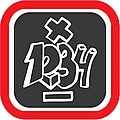
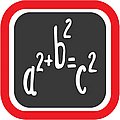
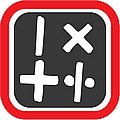
-
Calculus
Calculus
I CAN:
Review pre-calculus topics.
Apply the concept of derivatives to sketch and analyze graphs of functions and solve application problems.
Apply the definite integral to solve application problems finding areas and volumes.
Find the limits of functions numerically, graphically, and analytically.
Find the derivatives of polynomial, rational, exponential, logarithmic, and trigonometric functions, including implicitly.
Find definite and indefinite integrals of polynomial, rational, exponential, logarithmic, and trigonometric functions. Use the Fundamental Theorem of Calculus and Riemann Sums.
-
Algebra for Calculus
Algebra for Calculus
I CAN:
Solve and graph linear and quadratic equations and inequalities.
Solve and graph linear and quadratic functions.
Solve and graph higher degree polynomial and rational equations.
Solve and graph exponential and logarithmic equations.
Simplify expressions.
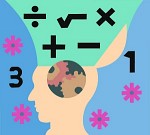
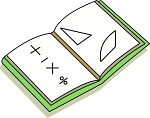

-
Dual Credit Calculus
Calculus
I CAN:
Review pre-calculus topics.
Apply the concept of derivatives to sketch and analyze graphs of functions and solve application problems.
Apply the definite integral to solve application problems finding areas and volumes.
Find the limits of functions numerically, graphically, and analytically.
Find the derivatives of polynomial, rational, exponential, logarithmic, and trigonometric functions, including implicitly.
Find definite and indefinite integrals of polynomial, rational, exponential, logarithmic, and trigonometric functions. Use the Fundamental Theorem of Calculus and Riemann Sums.
-
Elementary Statistics
Elementary Statistics
I CAN:
Analyze data and make statistical inferences.
Calculate possibilities and probabilities.
Analyze statistical distributions.
Construct estimations of means and proportions.
Conduct hypothesis testing.
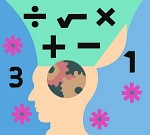
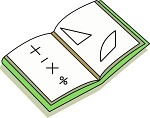
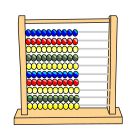
-
Geometry
Geometry
I can:
Use reasoning to define and develop properties of planar and spatial figures to solve a variety of problems.
Explore transformational geometry.
Apply congruency principles to prove triangles congruent and similarity principles to solve problems using ratios and proportions, including right triangle trigonometry.
Utilize formulas to solve problems related to perimeter, area, and volume of
planar and spatial figures.
Understand and interpret the concepts of probability and data analysis.
Review concepts of algebra and utilize coordinate geometry to investigate Euclidean properties.
-
Math Analysis
Math Analysis
I can:
Explore properties of conics. (DOK 4)
Use the graphing calculator to analyze functions. (DOK 4)
Use the fundamental theorem of algebra and related theorems to find zeros of polynomial functions; use graphing technology to explore families of algebraic expressions to determine if they are linear, non-linear, quadratic or cubic. (DOK 4)
Solve and graph linear, quadratic, polynomial, trigonometric, logarithmic and exponential functions and second-degree relations. (DOK 4)
Investigate matrices and determinant properties. (DOK 4)
Identify and evaluate sequences and series. (DOK 4)
